LAB REPORT
Science and Technology Making Headlines
Aug. 24, 2018

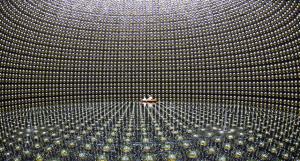
The Super-Kamiokande detector in Hida, Japan, could catch antineutrinos from a powerful nuclear blast about 100 kilometers away, scientists calculated.
Nuclear tests can’t hide from antineutrinos
Rogue nations that want to hide nuclear weapons tests may one day be thwarted by antineutrinos.
Atomic blasts emit immense numbers of the lightweight subatomic particles, which can travel long distances through the Earth. In general, the particles — the antimatter twins of neutrinos — are notoriously difficult to spot. But a large antineutrino detector located within a few hundred kilometers of a powerful nuclear explosion could glimpse a handful of the particles,
A global network of sensors already gathers detailed information about nuclear explosions by monitoring for telltale seismic activity and radioactive isotopes. In recent years, those sensors have revealed details of North Korean nuclear tests performed underground.
But if those sensors were unable to confirm that a nuclear explosion occurred, spotting antineutrinos would eliminate doubt, says physicist Adam Bernstein of Lawrence Livermore National Laboratory. “If you see a burst of antineutrinos, there’s really no other way you could have gotten that,” he says, aside from an exploding star in the Milky Way. Those stellar bursts are rare events unlikely to coincide with a seismic signature.

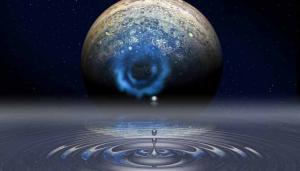
Unraveling the properties of fluid metallic hydrogen at the National Ignition Facility could help scientists unlock the mysteries of Jupiter’s formation and internal structure. Credit: Mark Meamber/LLNL
Going to extremes
Experiments using the world’s biggest laser have given scientists fresh insights into Jupiter and Saturn, the largest planets in our solar system.
Inside these giant planets, the hydrogen gas that forms a key part of their structure is subjected to pressures and temperatures 6 million times higher than Earth’s atmosphere. Under these extreme conditions, hydrogen stops behaving like a gas and instead is squeezed until it takes on the properties of a liquid metal.
To understand this process, researchers made use of Lawrence Livermore National Laboratory’s National Ignition Facility, the largest and most energetic laser in the world.
They fired powerful beams at a gas sample, raising it to a pressure similar to that found on Jupiter. They watched as hydrogen turned from an invisible gas to a transparent liquid, which then turned black as the pressure mounted even further and ultimately resembled a reflective metallic substance similar to aluminum.

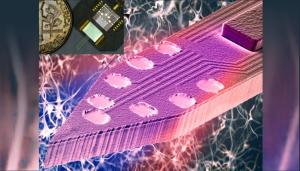
LLNL researchers developed a silicon-based neural implant that can control the electrical activity of brain cells by shining multicolor light into the brains of awake mice.
Can you see the light
Through the emerging field of optogenetics, a technology that allows genetically modified neurons in living tissue to be precisely controlled by means of light, scientists are attempting to gain a better understanding of how the brain works in hopes of discovering cures for debilitating neural disorders such as post-traumatic stress disorder (PTSD) and Alzheimer's disease.
A Lawrence Livermore National Laboratory engineer, along with researchers at the University of Michigan and New York University, have taken a major step forward in enabling "multicolor" optogenetic control of different neuron types. The team, including LLNL's Komal Kampasi, developed a novel silicon-based neural implant that can control the electrical activity of brain cells by shining multicolor light into the brains of awake mice.
Kampasi said the technology opens new avenues for neural circuit interrogation, which will help scientists better understand the organization and function of complex neural circuits.
"While most research in the field of optogenetics has focused on manipulating one neuron-type at a time by delivering mono-color light, our technology offers a multicolor, fiber-less solution for controlling two or more spatially intermingled neuronal populations," Kampasi explained. "This is a major step forward in optogenetics because neuroscientists can now manipulate different neuron types at a local circuit level while simultaneously recording high-quality, low-noise electrical data from those cells."

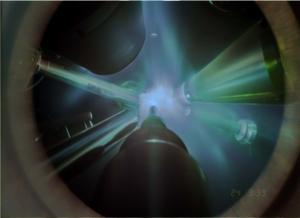
Through satellite images, researchers have observed a steep decline in the average extent of Arctic sea ice for every month of the year.
California is on thin ice
Globally, this summer has been one of the hottest on record.
The dramatic loss of Arctic sea ice cover is expected to continue throughout the 21st century. Over the next few decades, the Arctic Ocean is projected to become ice-free during the summer.
This massive loss of ice will eventually affect us all, but scientists from Lawrence Livermore National Laboratory say that Arctic sea ice loss of the magnitude expected in the next few decades could impact California's rainfall and make future droughts much worse.
The study identifies a new link between Arctic sea ice loss and the development of an atmospheric ridging system in the North Pacific. This atmospheric feature is known for steering precipitation-rich storms northward, into Alaska and Canada, and away from California. The team found that sea ice changes can lead to convection changes over the tropical Pacific. These convection changes can, in turn, drive the formation of an atmospheric ridge in the North Pacific, resulting in significant drying over California.
This study doesn't attribute the current drought in California that is fueling the massive fires to Arctic sea ice loss, but these rainfall patterns have been observed during the current drought, leaving the possibility that Arctic sea-ice loss could play a role.

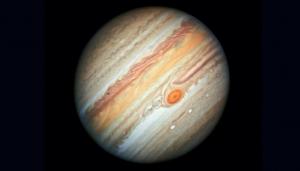
This image captures a high-altitude cloud formation surrounded by swirling patterns in the atmosphere of Jupiter's North North Temperate Belt region. The North North Temperate Belt is one of Jupiter's many colorful, swirling cloud bands. Image courtesy of NASA.
Why Jupiter shows its true colors
Scientists from Australia and the United States have helped to solve the mystery underlying Jupiter’s colored bands in a new study on the interaction between atmospheres and magnetic fields. Jupiter is by far the largest planet in our solar system. Unlike Earth, Jupiter has no solid surface – it is a gaseous planet, consisting mostly of hydrogen and helium.
Several strong jet streams flow west to east in Jupiter’s atmosphere that are, in a way, similar to Earth’s jet streams. Clouds of ammonia at Jupiter’s outer atmosphere are carried along by these jet streams to form Jupiter’s colored bands, which are shades of white, red, orange, brown and yellow.
Jeffrey Parker from Lawrence Livermore National Laboratory said their theory showed that jet streams were suppressed by a strong magnetic field. “The gas in the interior of Jupiter is magnetized, so we think our new theory explains why the jet streams go as deep as they do under the gas giant’s surface but don’t go any deeper.”





